
Fjord to Glacier on One of Norway’s Wildest Roads
Cycling Folgefonnavegen There are few places in the world where you can cycle from sea level to the edge of a glacier in one uninterrupted
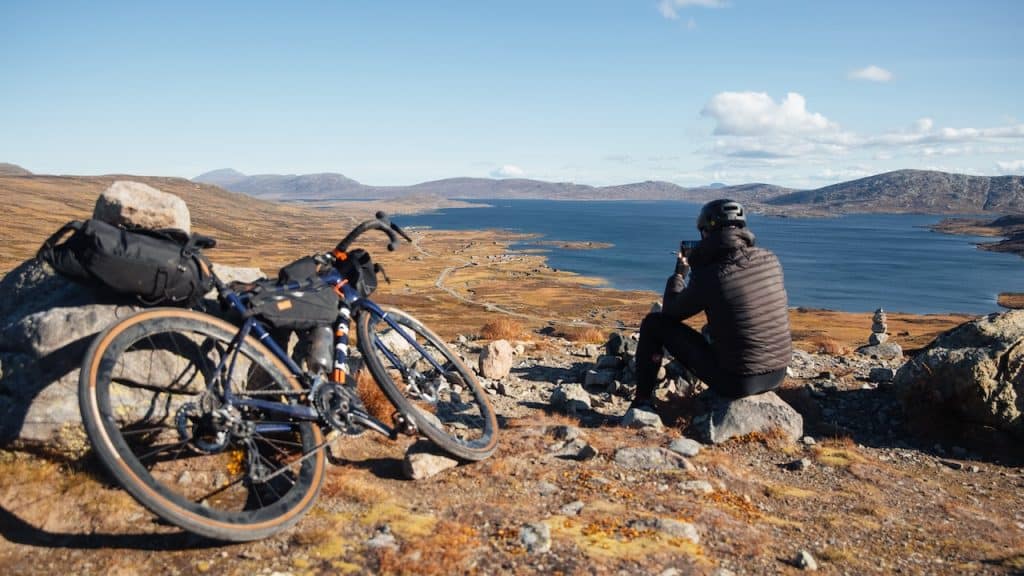
As August draws near, it seems like the perfect opportunity to delve into Norway’s renowned gravel routes, which meander over breathtaking mountain plateaus and weave through expansive forests. These routes are a dream come true for any gravel enthusiast, and they should unquestionably be included in your late summer and early autumn cycling plans.
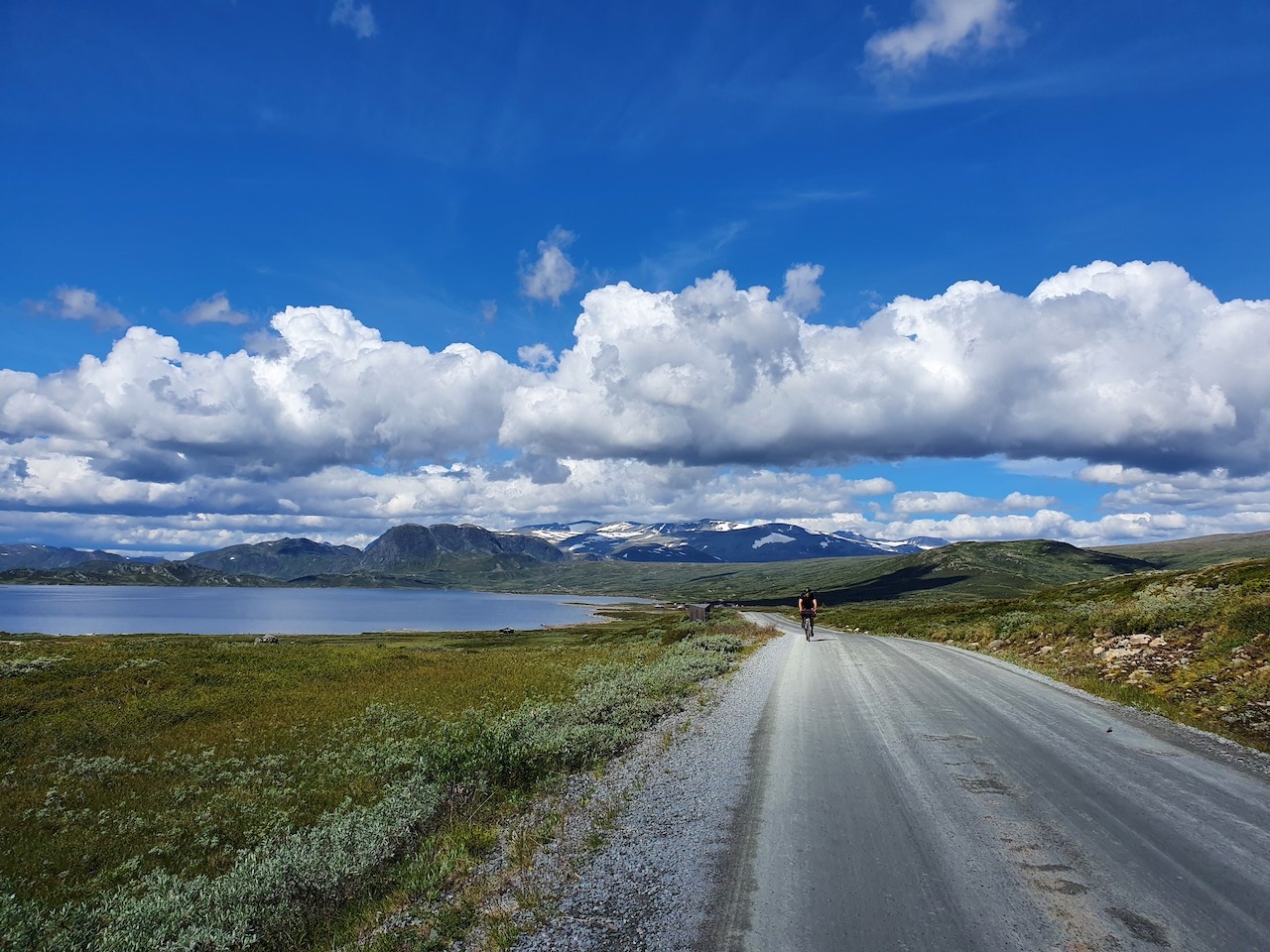
This time of year is ideal for tackling Norway’s gravel roads. With the snow finally melted away, the paths are clear and ready for exploration. By mid-August, mosquitoes and other biting insects begin to die off, and the long daylight hours allow for extended adventures, giving you plenty of time to soak in the stunning landscapes. In the following sections, we will explore some of the most spectacular gravel routes that Norway has to offer. Each route has its own unique blend of challenging terrain and awe-inspiring scenery promising unforgettable experiences. So, prepare your bike and gear up for an incredible adventure as we guide you through the must-ride gravel roads that should top every cyclist’s bucket list.
This classic gravel route, connecting Norway’s capital to the lakeside town of Gjøvik, is a thrilling rite of passage for any Oslo-based cyclist. Begin your adventure by taking the train from Oslo Sentrum to Gjøvik, a quick 1.5-hour journey. Once you arrive, embark on an unforgettable ride back to Oslo, traversing through picturesque farmland and the formidable Nordmarka forest.
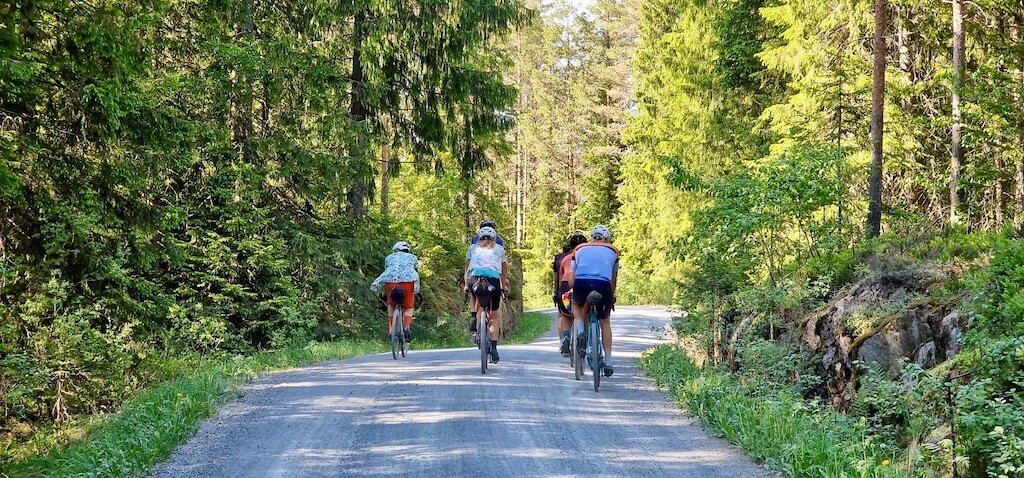
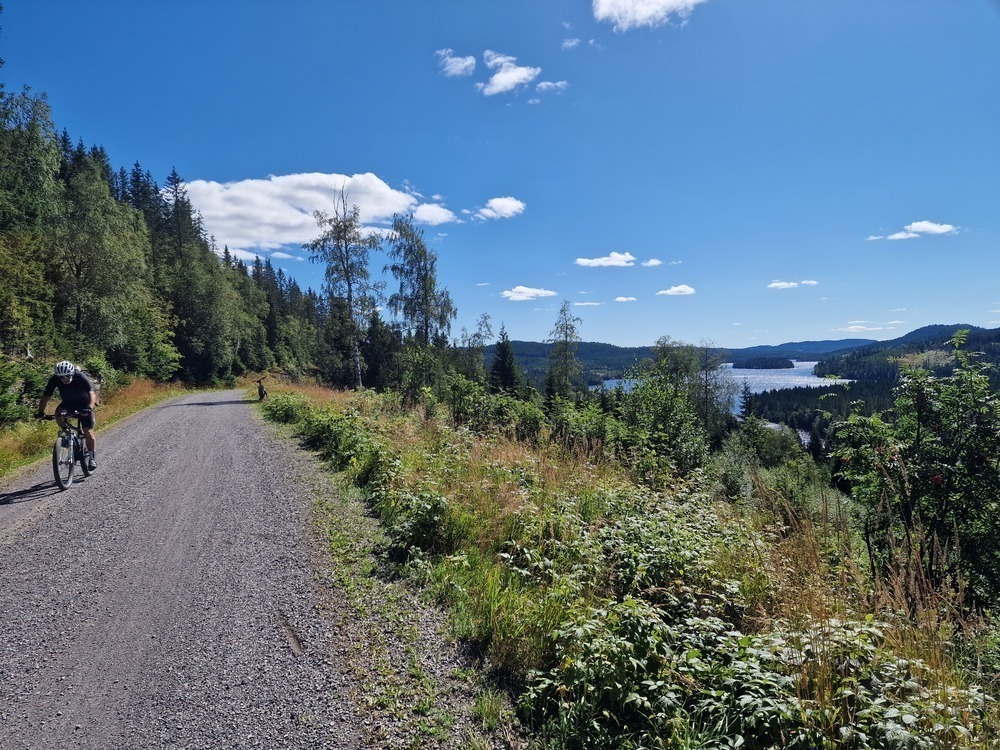
The route offers a perfect blend of cultivated land and vast Nordic forests, encapsulating the adventurous spirit that Scandinavia is famous for. As you navigate the rugged terrain, you’ll encounter a series of ascents and descents, making the ride both challenging and fun. With 90% of the route covered in gravel, you can expect minimal traffic and few fellow travelers, allowing for a truly immersive experience in nature.
Throughout the journey, the expansive landscapes of trees and meadows will often make you feel wonderfully isolated, as if you have the whole wilderness to yourself. This sense of solitude and connection to the natural world is what makes this route so special.
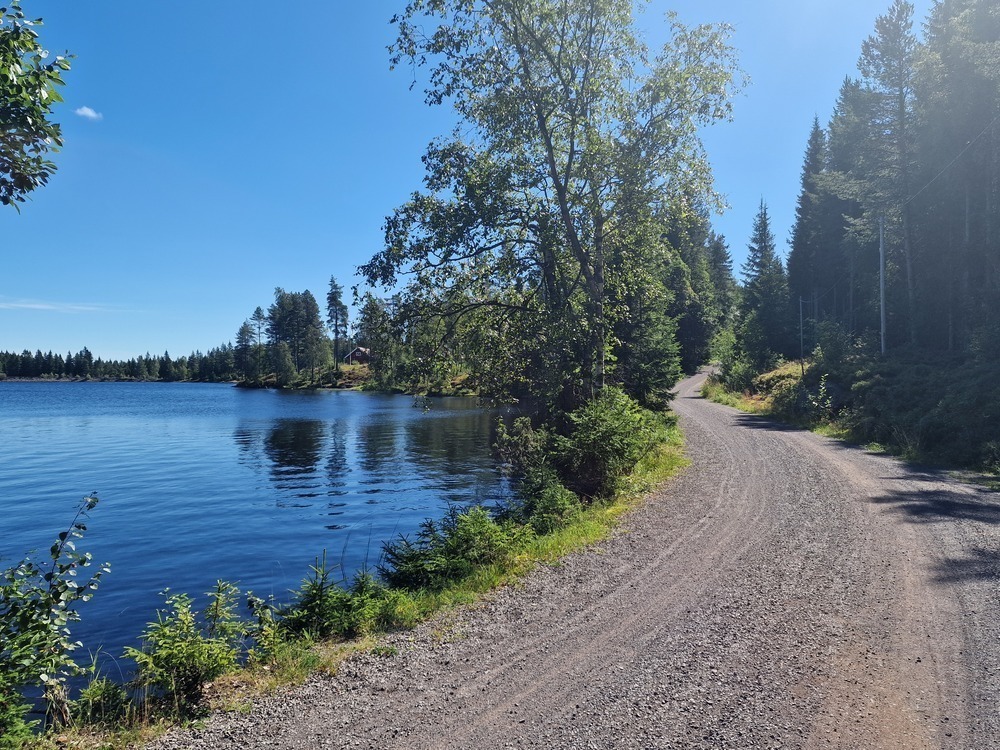
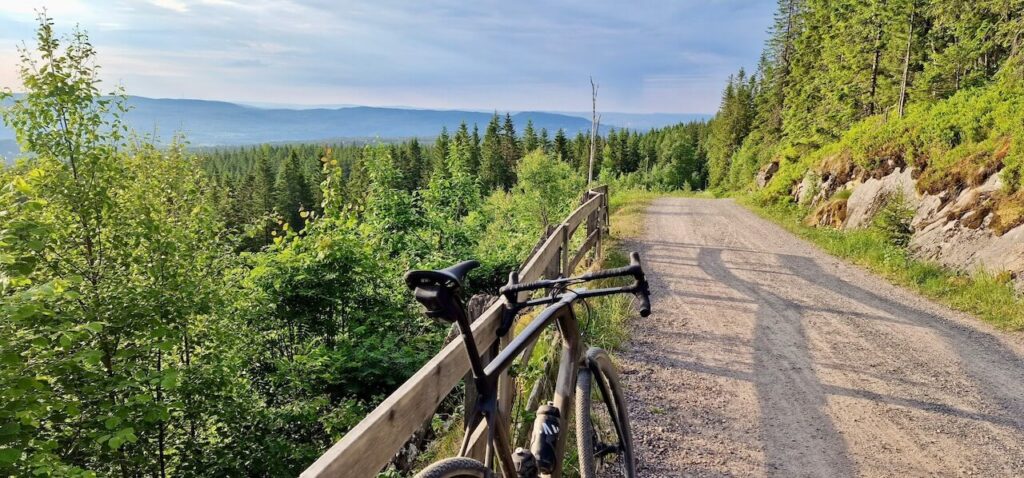
If you prefer to break the journey into two or three days, there are several mountain cabins along or near the route that offer comfortable accommodations. Wild camping is also a viable option, especially once you reach the forested areas, where numerous lakes provide picturesque spots for setting up camp.
However, it’s important to note that food options are limited along the route. Therefore, we recommend stocking up on supplies in Gjøvik before you set off to ensure you have everything you need for your adventure. With proper preparation, you can fully enjoy the stunning scenery and tranquility that this gravel route has to offer.

Time of Year: Mid/Late May – October
Difficulty: 7/10
Bike Tyres: 35m+
Start: Gjøvik Train Station (Oslo – Gjøvik line). You can do the route in reverse format but this requires more ascending.
This lesser-known loop offers a unique opportunity to explore the wild and wonderful Hardangervidda Mountain plateau. Since 95% of the national park is off-limits to cyclists, riding this small section on well-maintained gravel roads is a special treat. To reach the starting point, you can either push your bike up a very steep hiking path used by the Norwegian resistance during World War II or take the gondola to the top. I prefer the latter, as it easily transports both you and your bike. Unfortunately, the Gondola has closed for maintenance in 2024. Therefore, either hike the bike up the path (tough) or go the opposite direction and descend the steep path at the end.
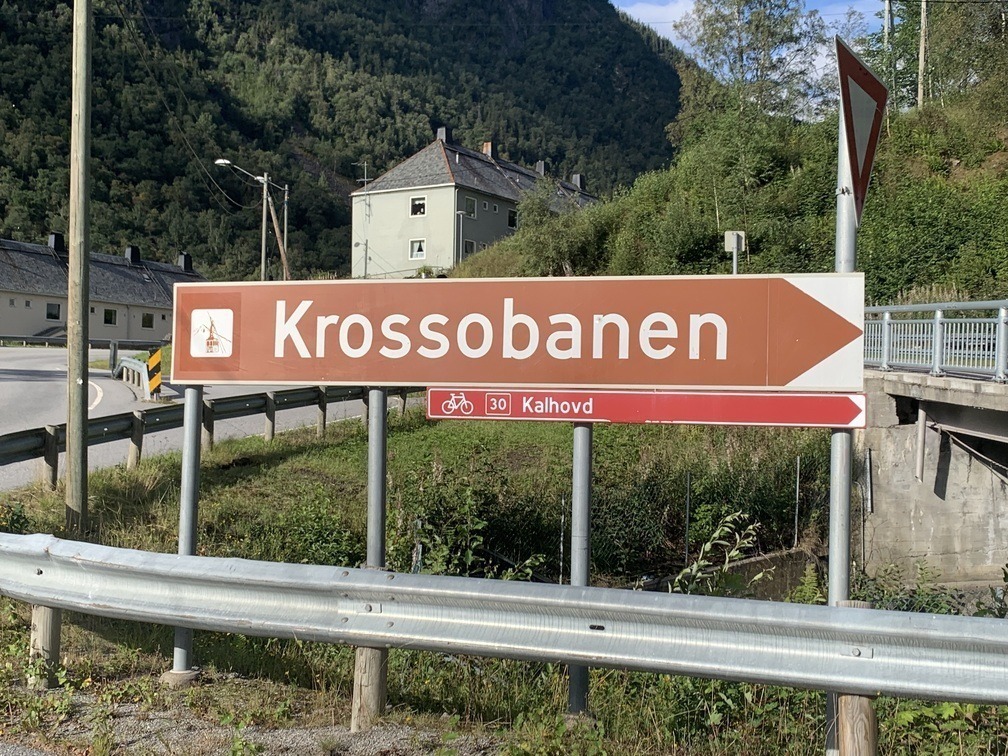
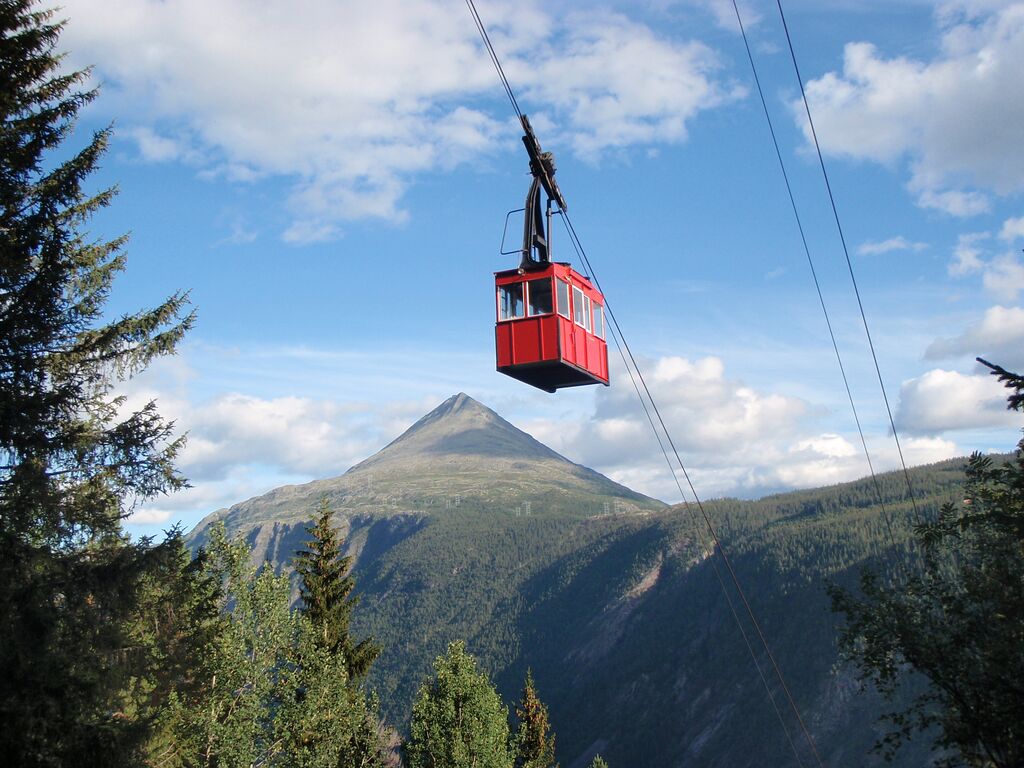
If you hike up, once at the top, you’ll be treated to spectacular views of the valley and the town of Rjukan below. You are now 1000 meters above sea level, feeling worlds away from the warmer valley below. The gravel road starts with rough, loose stones, ascending for a kilometer. It’s a tough beginning, but once you’re above the tree line, the road flattens out, revealing expansive views of a barren plateau. This gravel road sees some tourist traffic, so you might encounter a car or two, but generally, you’ll have most of the road to yourself. While the route may not be as scenic as other gravel roads, it certainly feels wild and intimidating. Note It can be warm and sunny in the valley but a different world on the plateau. Be prepared for any kind of weather, with plenty of wind on unsettled days.
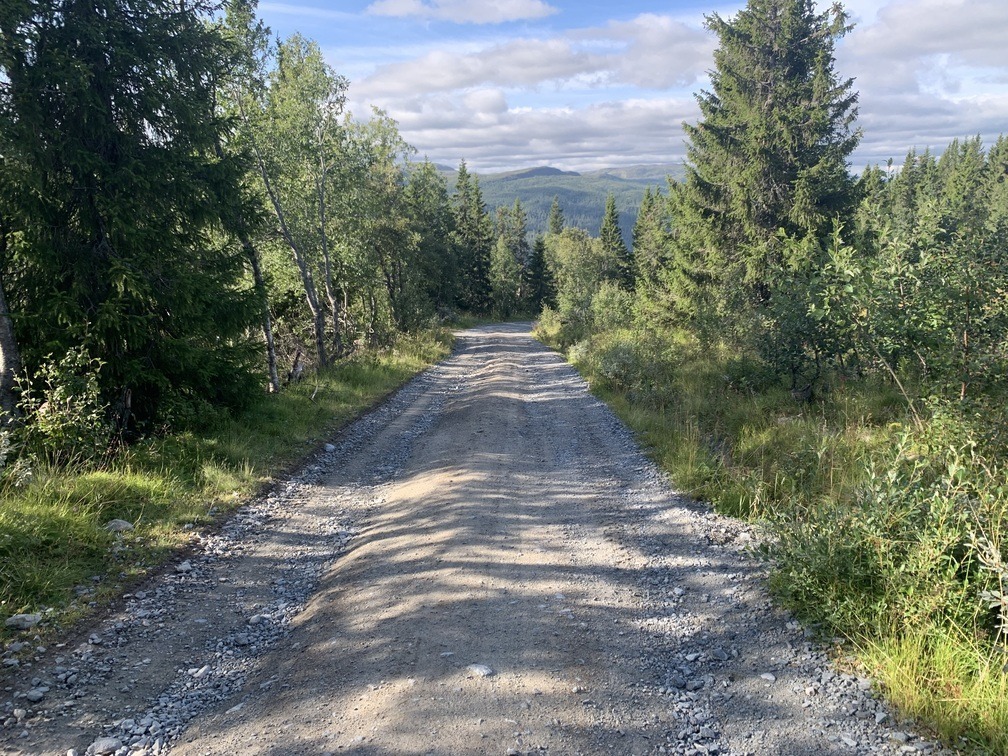
Midway through the gravel route, you’ll reach a traditional Norwegian mountain lodge with a café serving food. I treated myself here before continuing off the mountain plateau. If you want to explore the outer limits of the gravel section, take a small detour from the lodge to a lake where a summer boat will ferry you across to another mountain cabin. This detour is mainly used by hikers but is worth it if you plan to spend the night on the plateau.
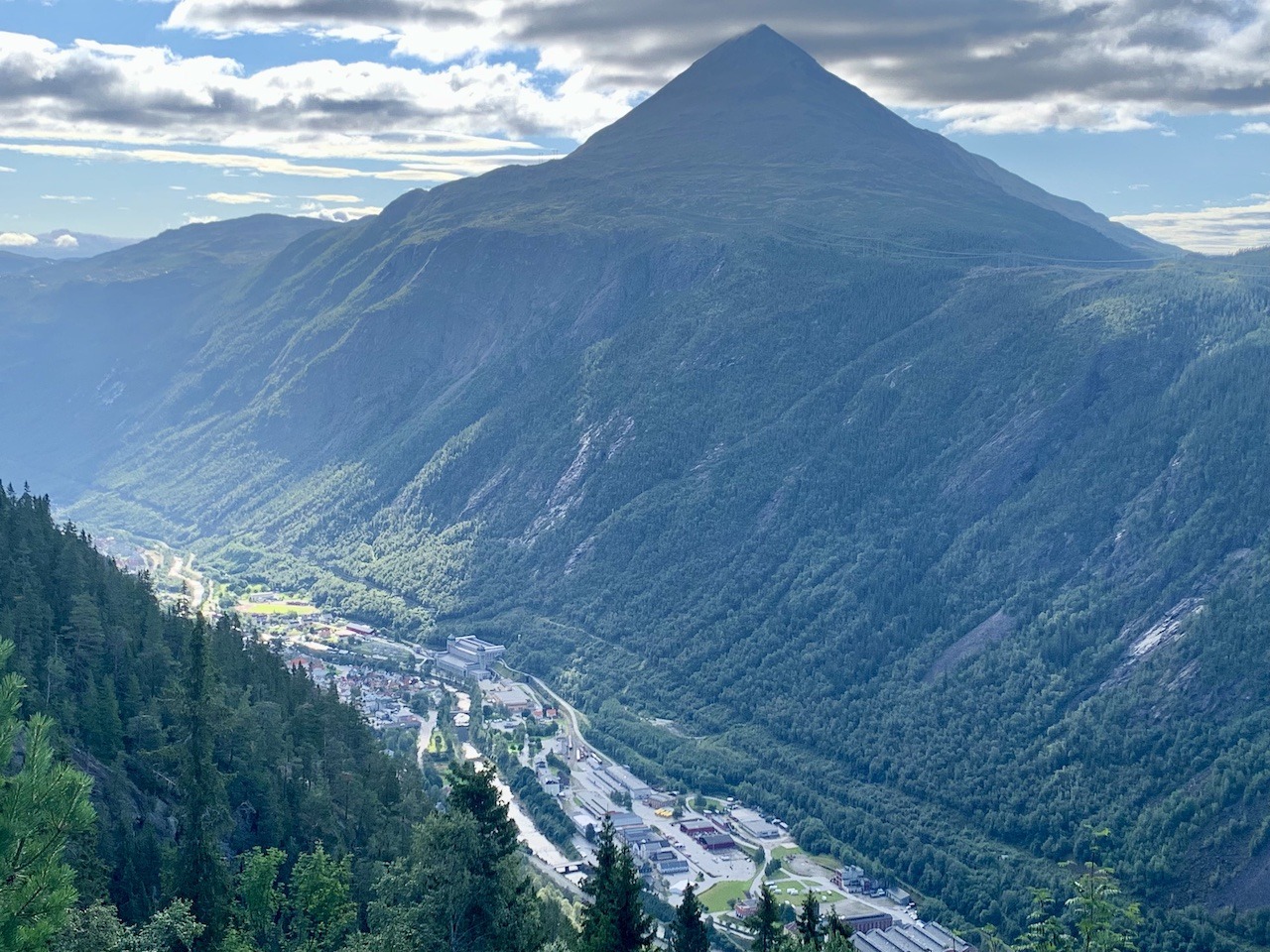

As you descend from the mountain, you will reach a paved road that you can follow southbound back to Rjukan to complete the route. Alternatively, you can take the road east and continue over another mountain pass to Geilo, where you can connect to other National Cycle Routes leading to Rallarvegen or Mjølkevegen.
Time of Year: Mid June – September
Difficulty: 5/10 (excluding the hike section up the path at the start)
Bike Tyres: 35m+
Start: Rjulkan Krossobane.
The journey begins in Dombås, a small town that serves as the ideal starting point with its convenient facilities and strong connections to the rest of Norway. As you pedal through the route, you’ll encounter a variety of stunning vistas and unique cultural experiences. The Dovrefjell-Sunndalsfjella National Park is a highlight, offering sightings of wild reindeer and musk oxen amid the stark, alpine terrain. Moving further along, the route takes you to the boundaries of Rondane National Park, Norway’s oldest national park, known for its striking peaks and tranquil environment. In addition to the natural wonders, the route passes through quaint villages and traditional farms where you can immerse yourself in the local heritage.

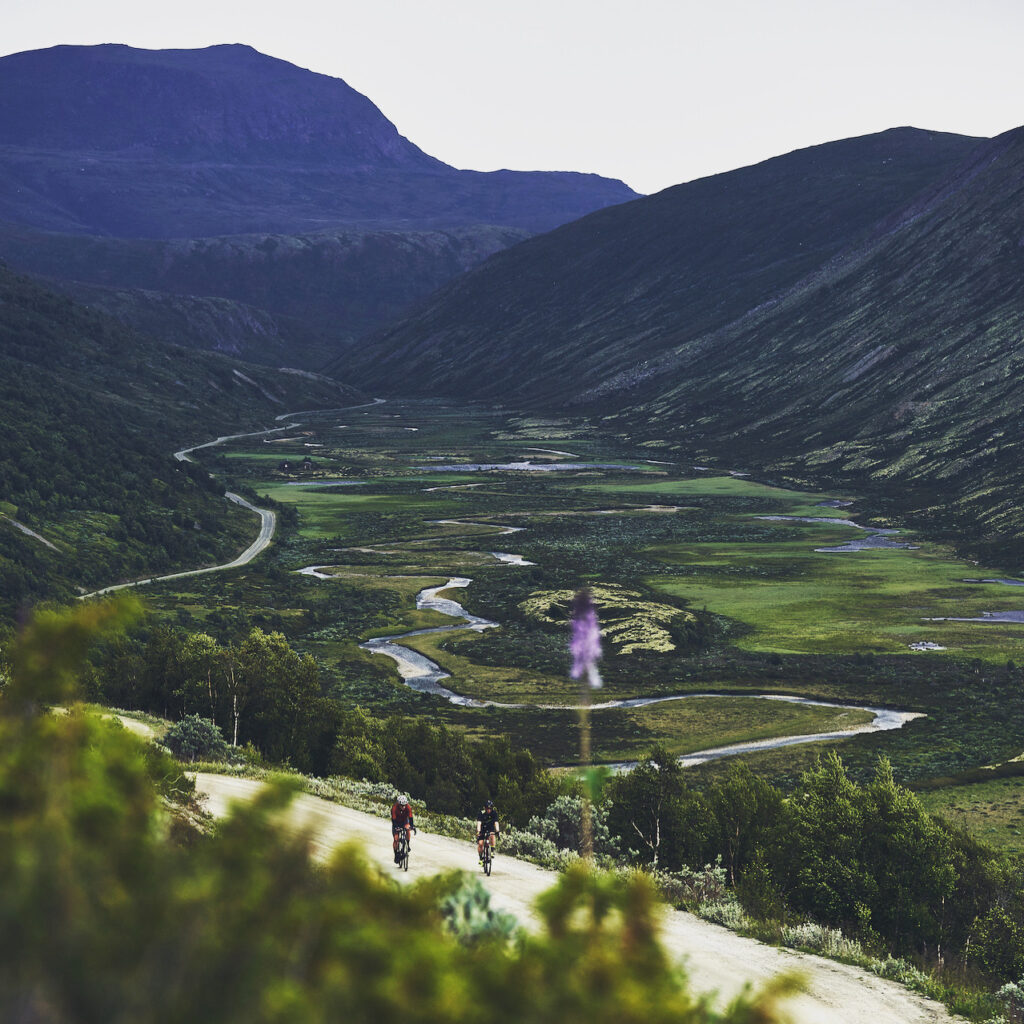
The Tour de Dovre gravel route offers more than just a cycling adventure; it’s a journey into the heart of Norway’s wilderness and culture. The scenic Grimsdalen Valley, dotted with traditional Norwegian cabins, provides a stunning backdrop in the latter part of the trip. The diverse terrain and unpredictable weather demand solid preparation, but the experience is highly rewarding. Mostly consisting of gravel paths and single tracks, the route wasn’t fully completed until 2017. Along the way, you’ll find a few free shelters, a DNT mountain cabin, and small villages offering roofed accommodations if needed. Wild camping is also an option, though the high-altitude alpine plains can be quite windy. Most cyclists finish the loop in 1-2 days, with the option to extend the ride on gravel roads to Røros for an added adventure.

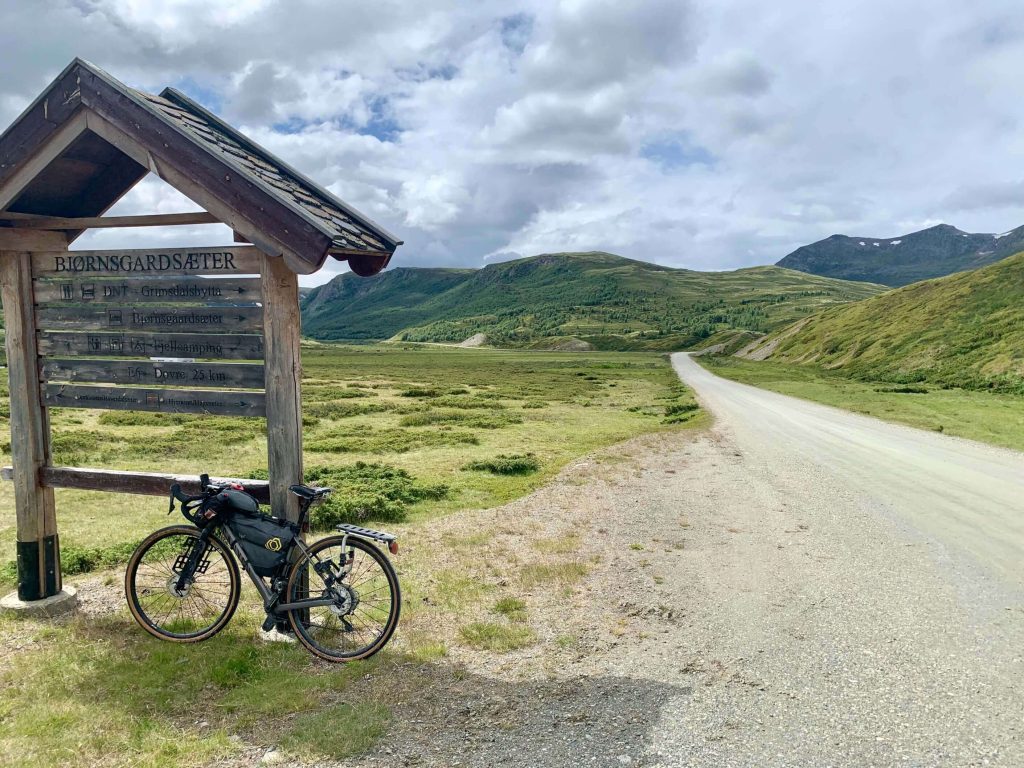
This is a top-tier gravel route, renowned in Norway and highly popular among cyclists during the summer. Its distinctive alpine plains, spanning the borders of three national parks, offer an exceptional experience for those looking to explore the best of eastern Norway.
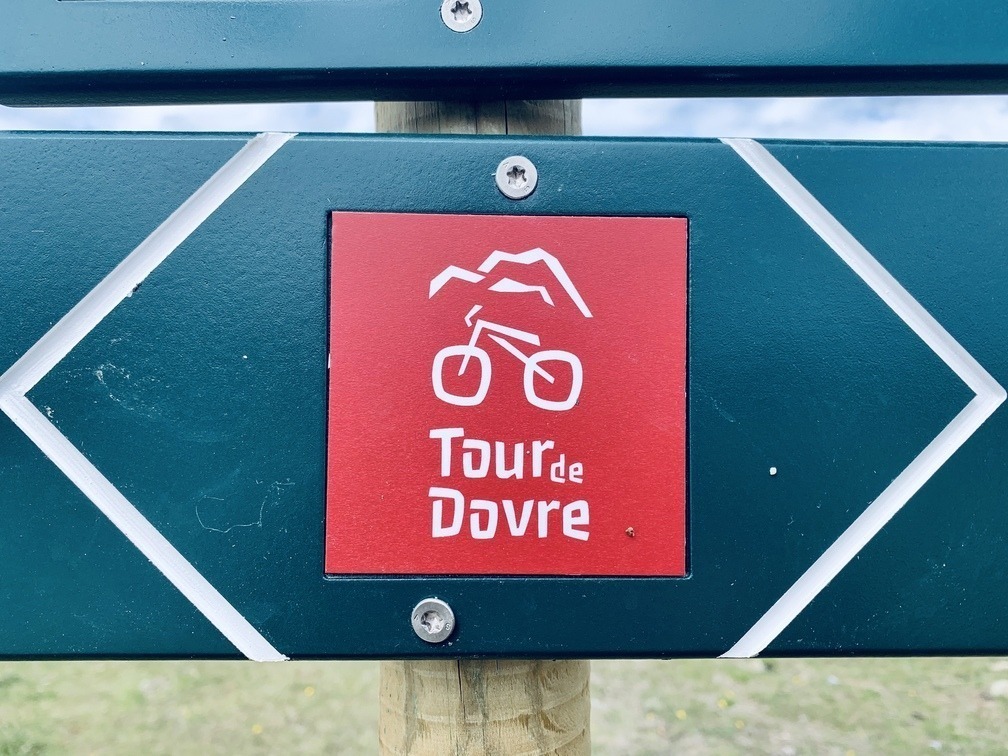
Time of Year: Mid June – September
Difficulty: 7/10
Bike Tyres: 35m+
Start: Dombås. Trains from Oslo, Trondheim, and Åndalsnes make it easy to reach with a bike.
Part 2 of this blog can be found here (Planner & Annual members access only)
2 Hardangervidda photos credited to VisitNorway

Cycling Folgefonnavegen There are few places in the world where you can cycle from sea level to the edge of a glacier in one uninterrupted
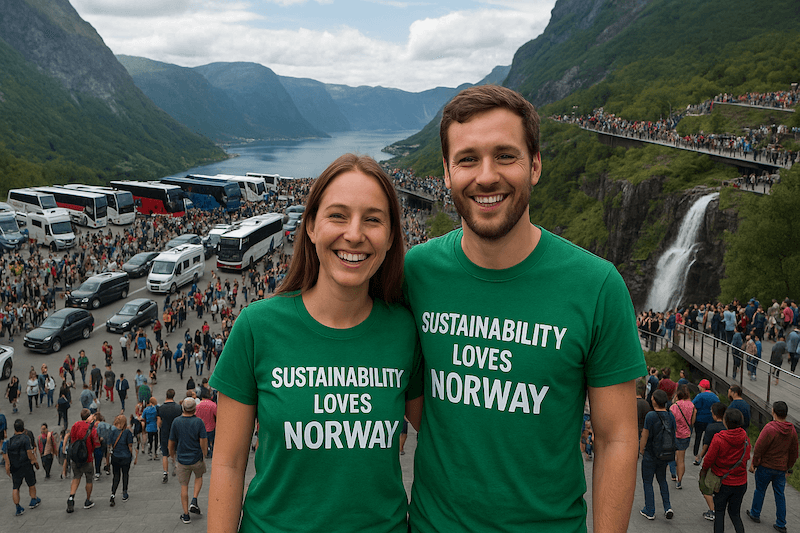
In today’s blog, we’re heading into a world of make-believe. A world where no one needs to take real action or make tough decisions. Where
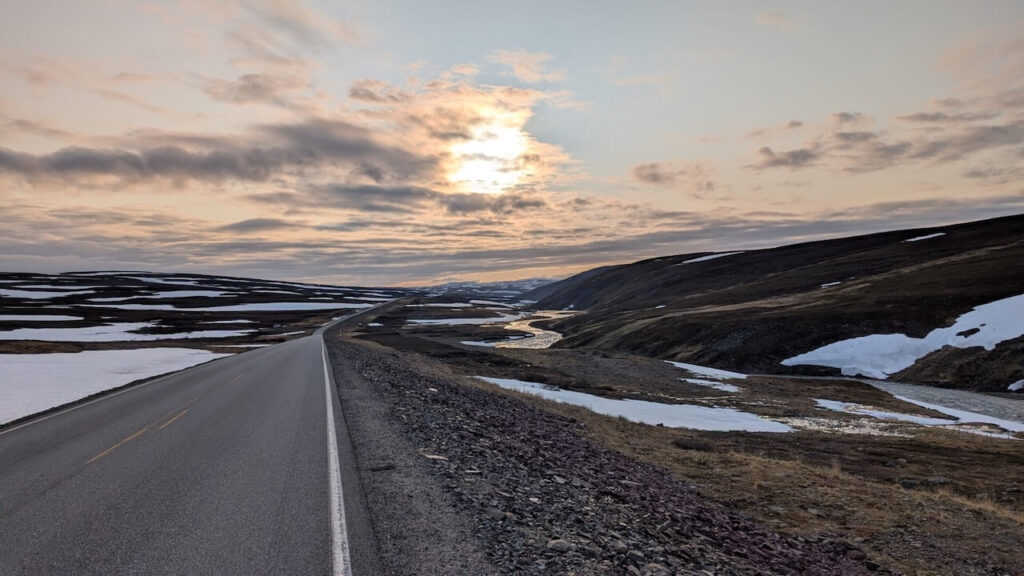
A Long Ride Through the Arctic of Europe: From the forests of Finland to the fjords of Norway and the wilderness of Swedish Lapland The
Cycle Norway is dedicated to making Norway, safer and more enjoyable to experience by bike and to inspire and inform a growing audience of the opportunities available.